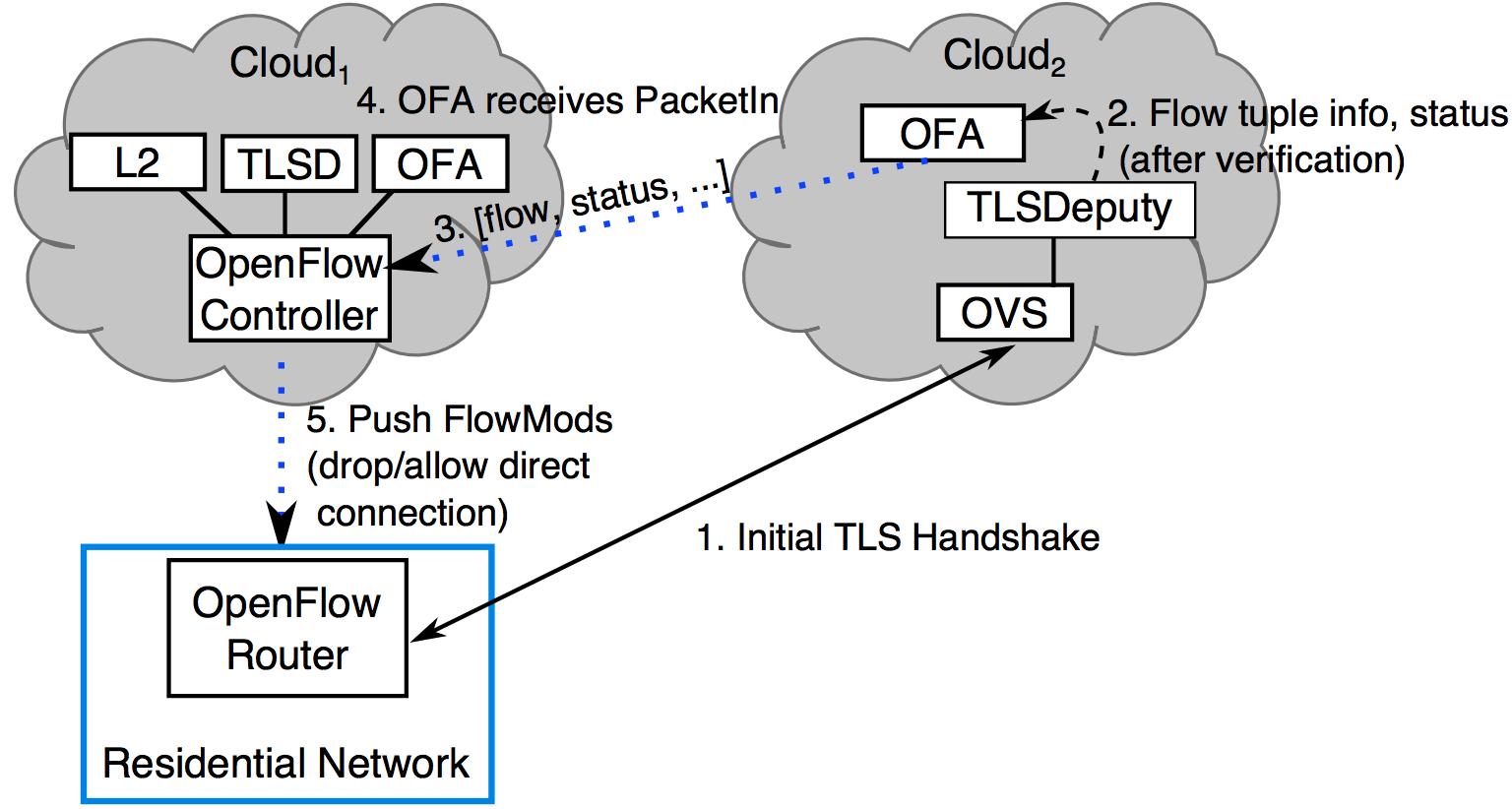 |
|

While the software-defined networking (SDN) paradigm has had a significant impact on enterprise networks, in particular in data centers, it has not spread to residential users. But, the fundamental properties of SDNs, namely the outsourcing of management and control, are key enablers of a shift in how we manage residential networks.
In our research, we have modified the TP-LINK TL-WR1043ND v2 wireless router with a custom OpenWRT firmware image that enables OpenFlow support. We then created an OpenFlow controller in the Amazon EC2 cloud and configured the router to elevate traffic to the cloud controller. In our research, we confirmed that the latency overheads inherent in the approach would be acceptable in practice.
This research project will study the data collected from multiple residential routers to evaluate the feasibility of OpenFlow. The approach will also examine the feasibility of selectively proxying traffic through VMs in EC2 to enable IDS and protocol-aware firewalling techniques.
When complete, we expect to have results showing the viability of cloud-based network defenses for residential networks directly via cloud computing providers or through third-party services running in cloud environments.
Yu Liu, a PhD student working on the residential SDN project, created a tutorial for others when setting up OpenFlow on similar consumer-grade routers. It is available at https://web.cs.wpi.edu/~yliu25/floodlightsetup.html.
This project is described in a press release from WPI as well as in the following video that demonstrates how the technology works.
This material is based upon work supported by the National Science Foundation under Grant No. 1651540. Any opinions, findings, and conclusions or recommendations expressed in this material are those of the author(s) and do not necessarily reflect the views of the National Science Foundation.